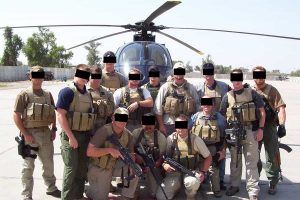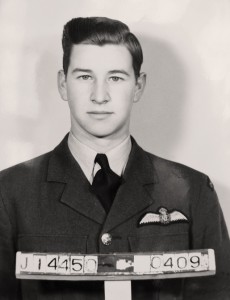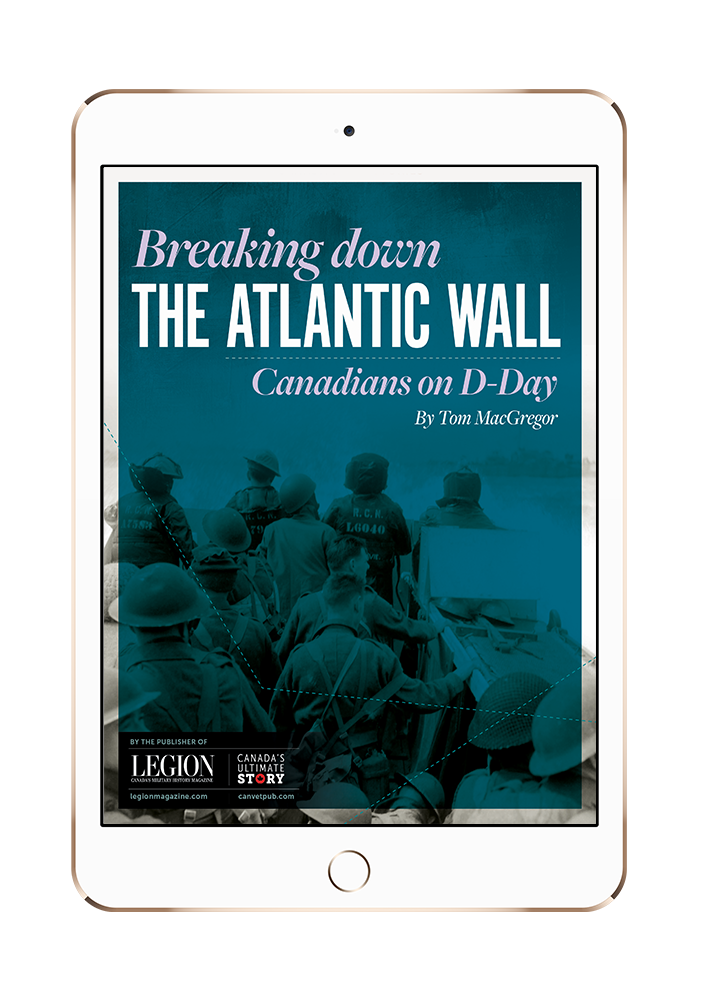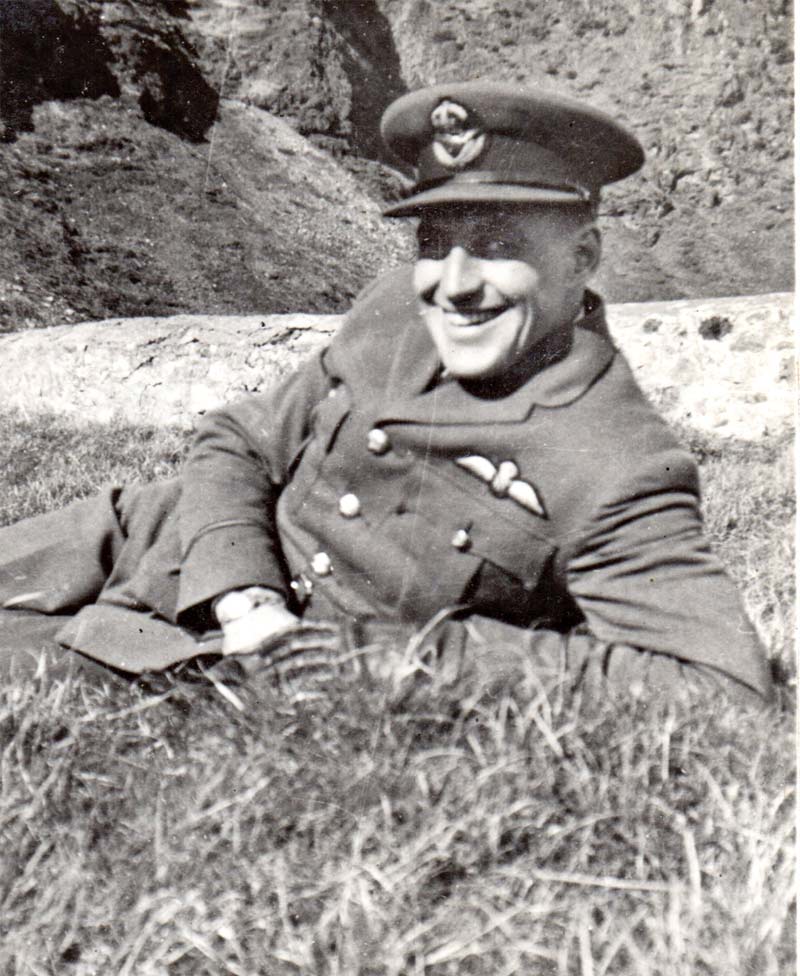
Canadian pilot John (Jack) Benzie flew a Hurricane fighter with 242 Squadron, RAF, in France (below) and during the early days of the Battle of Britain (below). [Courtesy Benzie family]
During the late afternoon of Sept. 7, 1940, waves of German aircraft advanced inexorably up the Thames estuary and menacingly headed toward London. What had been the Battle of Britain was about to morph into the Blitz as bombers pounded the east end of the city, docklands and oil storage facilities. It signalled a shift in German tactics—away from attacks focused on aircraft factories, airfields and infrastructure of Royal Air Force Fighter Command.
With the RAF defenders desperately working to keep the bombers from the capital, engagements between Fighter Command and the Luftwaffe spread across vast swathes of the skies to the east and northeast of London. The fighter squadrons tried to reach the bombers through screens of escorting Messerschmitt Bf 109s and Bf 110s. Losses on both sides were significant.
The Hurricane exploded in a meadow alongside the railway at Blackacre. Those who rushed to the scene found little apart from a deep crater.

Battle of Britain [Courtesy Benzie family]
Among those to join the fray was 242 Squadron, scrambled from RAF Duxford near Cambridge. Famously, the unit
was led by the enigmatic and legless Douglas Bader. Although not a Canadian squadron, many of its pilots were Canadians.
Most of what happened in 242 Squadron’s frantic battle that afternoon can be pieced together from its operations record and from combat reports of the pilots who survived. But one detail is hard to pin down: what happened to the one 242 pilot who failed to return that day?
No one on the squadron had seen what happened to him. On the ground, though, watchers stood transfixed by the spectacle of RAF fighters wading into swarms of enemy aircraft. Suddenly, out of the whirling fracas and chattering machine guns, a Hurricane fell away from the battle, plummeting earthward in a screaming dive. The plane’s descent quickly tilted to near vertical; its fiery passage marked by a trail of smoke.

[U.S. National Archives and Records Administration/Wikimedia]
Those watching from the village of Theydon Bois in Essex hoped that a parachute would blossom above them. It didn’t. Instead, the Hurricane exploded in a meadow alongside the railway at Blackacre. Those who rushed to the scene found little apart from a deep crater and scattered fragments of the airframe.
Wisps of smoke rose from the gash in the soil and ammunition exploded from the wreckage. And strewn around the lip of the crater were shreds of a bloodied RAF uniform.
Eventually, police and army guards abandoned the site, official action limited to clearing away a few scraps of debris. Meanwhile, the locals moved on, and nature healed the scar on the landscape, as it always had.
Overhead, battles continued to rage. There would be many more casualties such as this, with losses of personnel becoming a critical factor in the battle’s outcome.
A common misconception has it that Britain stood alone during the perilously dark days of 1940—a time when the very survival of the country and its vast Empire seemed very much in doubt. However, in the time that followed the early war defeat in France and the withdrawal of the British Expeditionary Force from Dunkirk, Britain was anything but on its own.
By the summer of 1940, thousands of soldiers, sailors and airmen had fled their occupied homelands in Europe and had managed to reach Britain’s shores to continue the fight against Nazi Germany. Significant among these refugees were large numbers of trained pilots, aircrew and ground crew who were ultimately assimilated into the ranks of the RAF.
Many of these men were absorbed into the ranks of RAF Fighter Command which, by July 1940, was haemorrhaging pilots through combat losses. In short, its lifeblood was draining away. The infusion of foreign pilots was a game changer.

Hurricane fighters line up during training.[LAC/PA-128128]
Aside from the influx of pilots from Poland, Czechoslovakia, France and other European nations, Britain’s global empire fed even more fliers into its defence. Indeed, no less than 15 other countries made up the band of men whom Winston Churchill later called The Few. Canada’s contribution to the Battle of Britain included 117 pilots and aircrew, making it one of the largest national groupings among the nearly 3,000 Allied men in the fight.
Among the more than 20 Canadians killed in the battle was John (Jack) Benzie. He was already in Britain and serving in the RAF when the U.K. and France declared war on Sept. 3, 1939.
Benzie was born in Winnipeg on March 14, 1915, to John and Agnes Benzie. After completing his primary education, he graduated from St. John’s Technical High School during the Depression. With prospects for employment low, he enlisted with Princess Patricia’s Canadian Light Infantry and served for three years.
Having long harboured an ambition to fly, the resourceful Benzie set out for the U.K. and, after arriving in Britain, he was accepted for a short service commission in the RAF and pilot training, which began in the spring of 1939. He had his wings by December.
Posted to RAF Aston Down, Benzie completed further training on Hurricanes before joining 242 Squadron at RAF Church Fenton in early 1940. He then went with the squadron to France in May. It was there that he got his first taste of combat. He was also shot down on the 23rd, an episode he recorded in his diary.

Benzie poses for a photo in France in May 1940. [LAC/C-061606]
“Left Manston 1:45 PM with two squadrons of Hurricanes escorting Blenheims well into German lines near Cambrai and Arras,” wrote Benzie. “We ran into a bunch of ME 109s escorting a convoy of Dorniers.”
The Germans attacked. Benzie fired at two of the 109s, but missed. Return fire damaged his wingtip. With limited speed and manoeuvrability, he made for the clouds to escape. After reemerging from the cover, he spotted three 109s. He dropped in behind one and emptied his ammunition on it.
“Long streams of petrol and smoke came from this aircraft, and he made a steep turn and spiralled to earth,” noted Benzie, who headed back for the clouds with “the two other 109s…hot on my tail.
“I tried every manoeuvre I could,” he wrote, “but just before I reached the clouds a burst of incendiary bullets entered the cockpit and hit my left leg.”
As Benzie headed back to base, his cockpit began to fill with smoke and his engine started to misfire. He decided he had no choice but to abandon his aircraft over Lens, France.
“I ripped off the safety straps and emergency panel and then the engine stopped,” wrote Benzie. “I steered the plane away from the city and at 800 feet I jumped out. I was machine gunned by French ground troops on the way down but fortunately not hit.”

American Pete Brown, serving with 242, readies for takeoff [Courtesy Benzie family; CAF]
He landed in a field outside of Harnes. Locals attacked him, thinking at first he was German, but finally one of the Frenchman understood his English and he was taken to a casualty clearing station. Three days later, he left Dunkirk in a convoy back to Britain.
On July 11, one day after the start of the Battle of Britain, Benzie had sufficiently recovered to rejoin 242. He was quickly thrown back into the fray during the summer and into early September.
The squadron’s diary for Sept.7, 1940, has details of the day’s action, with a reference to Benzie merely a footnote:“Yellow 2, Pilot Officer J Benzie, missing.”
More than 30 years later, local memory of the 1940 crash at Blackacre had faded and largely been forgotten. However, metal detectorists searching for Roman coins in that same field in the mid-1970s stumbled across parts of what they believed to be aircraft wreckage. They contacted the now defunct London Air Museum to report their find.
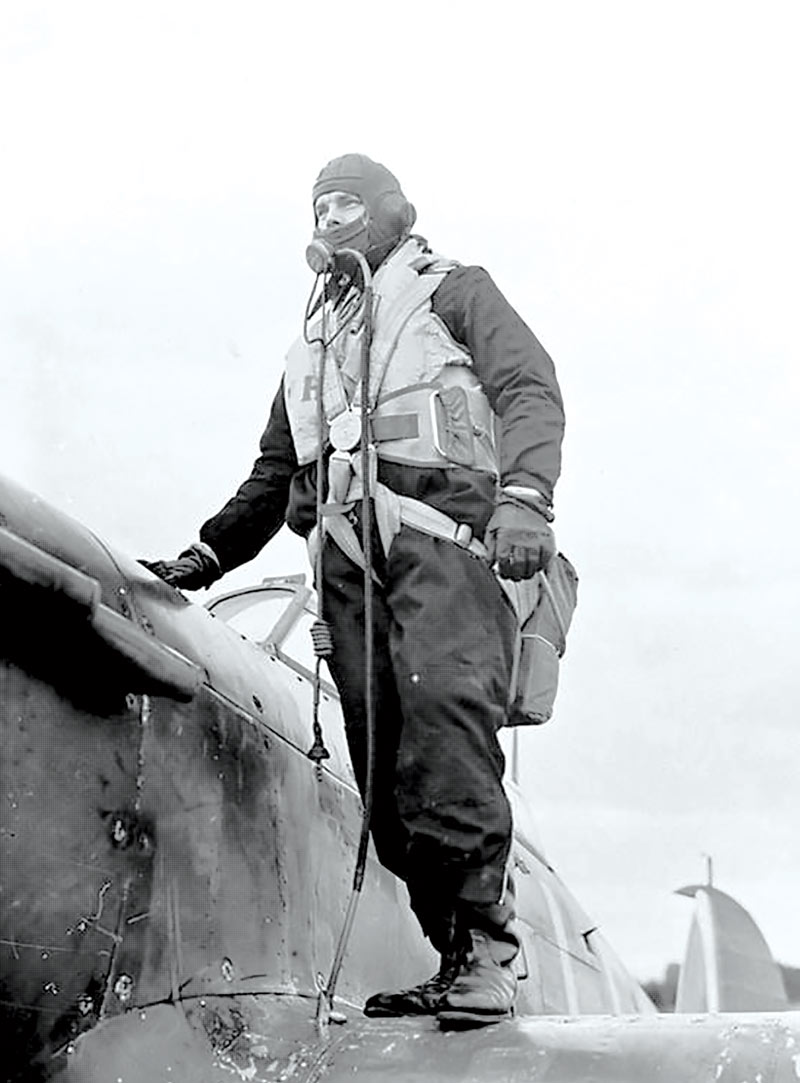
An unidentified pilot of 242 Squadron poses on the wing of his Hurricane in September 1940 [Andy Saunders]

The oxygen mask connector with his name on it found at the crash site with the pilot.[mrcool/Alamy/T5E0F0]
Visiting the site, the museum’s John Tickner and Tony Graves pinpointed the crash site, which lay in a sloping field just alongside the London Underground line at Blackacre. Based on debris near the surface, the pair quickly established the aircraft bits belonged to a Hurricane. The museum team secured permission to dig and carried out an excavation in 1976. Five and a half metres deep they found a Rolls-Royce Merlin engine and wreckage from a cockpit—and the skeletal and burnt remains of its unfortunate pilot.
The airframe and its occupant had been very badly burned, and despite extensive searching, nothing was found to identify either the plane or its pilot. Thus, the British Ministry of Defence declared the man unknown, and he was buried on July 15, 1977, at Brookwood Military Cemetery in Surrey.
Of course, the aircraft was likely the one that had crashed in the area on Sept. 7, 1940. But, there were three missing Hurricane pilots who had been lost and remained missing from air battles that day: Flight-Lieutenant Hugh Beresford and Flying Officer Lancelot Mitchell of 257 Squadron—and Benzie.
Three years after the discovery at Blackacre, Beresford’s remains were recovered and identified at a crash site on the Isle of Sheppey. Then, when the London Air Museum exhibited items from the Blackacre site, they described them as from Hurricane P2962—the aircraft in which Benzie had been lost.
Of course, the museum knew then that Beresford had been identified. And it had taken the view that it was reasonable to assume that Mitchell, flying in the same squadron as Beresford, was lost in the same action and had probably been shot down in the same area. So, the conclusion that the Blackacre crash involved Benzie was reasonable. But the story didn’t end there.
In September 1981, a team of air force enthusiasts and experts (including members of the 1976 recovery group) re-excavated the Blackacre crash site in the hopes of discovering additional clues that might help definitively identify the plane’s pilot. Among their meagre finds was an insignificant looking brass connector assembly.
It was the connector from a pilot’s oxygen mask hose that plugs into the supply socket in the cockpit. Pilots commonly marked this equipment with their name for hygiene reasons. And roughly scratched into the surface of this one: “BENZIE.” At last, here was evidence that would seemingly connect Benzie to the crash and lead to his name being inscribed on that headstone at Brookwood.
Unfortunately, the Ministry of Defence saw it differently. It took the view that such equipment could be shared or left in an aircraft that wasn’t being flown by the individual named on it. Thus, it had adopted a policy where identification couldn’t be determined by such evidence alone.

Hurricane fighters on patrol. [Andy Saunders]
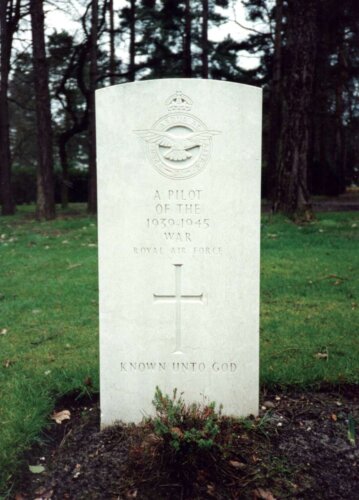
Hurricane fighters on patrol.[Andy Saunders]
Then, on June 21, 2001, the RAF’s Air Historical Branch wrote: “According to our records, P2962 was shot down over the Thames Estuary at 1645 hrs on 7 September 1940. It was believed to have crashed near Theydon Bois in Essex.”
If nothing else, here was confirmation anew—and official at that—that Benzie’s Hurricane was thought to have been lost near the tiny hamlet where the unknown remains were found in 1976.
Today, on the 85th anniversary of the Battle of Britain, Benzie is still officially listed as missing with no known grave. But the evidence strongly suggests that the burial at Brookwood Military Cemetery, Plot 22, Row E, Grave 1, holds his remains. And his family hasn’t given up on having his final resting place properly marked.
Meanwhile, with no known grave in the land he died defend-ing, Benzie does have a significant memorial in his native Canada. A lake in northwestern Manitoba was named in his honour in 1953. It’s likely that Benzie Lake is the largest monument to any of Churchill’s Few.
Advertisement








